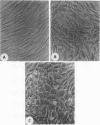Abstract
The interaction of polyoma virus and human cells was investigated. Abortive infection as evidenced by the synthesis of T-antigen was observed in normal fibroblast and abnormal (transformed) cells but not in normal epithelial cells. A high percentage of simian virus 40-transformed WI-18 Va2 and spontaneously transformed BE skin cells produced T-antigen after high-multiplicity infection, but most of the cells rapidly lost antigen-producing capacity upon cell passage, and the cultures became negative by passage 3. All fibroblast cells displayed varying degrees of susceptibility to infection, but most of the cell lines became negative for T-antigen except for two. In one, T-antigen persisted in a small percentage of the cells throughout the lifetime of the culture, without cellular transformation occurring. In the other, the entire culture became morphologically transformed and eventually consisted of 100% T-antigen-positive cells. This is the first time that normal diploid human fibroblast cells have been transformed by polyoma virus.
Full text
PDF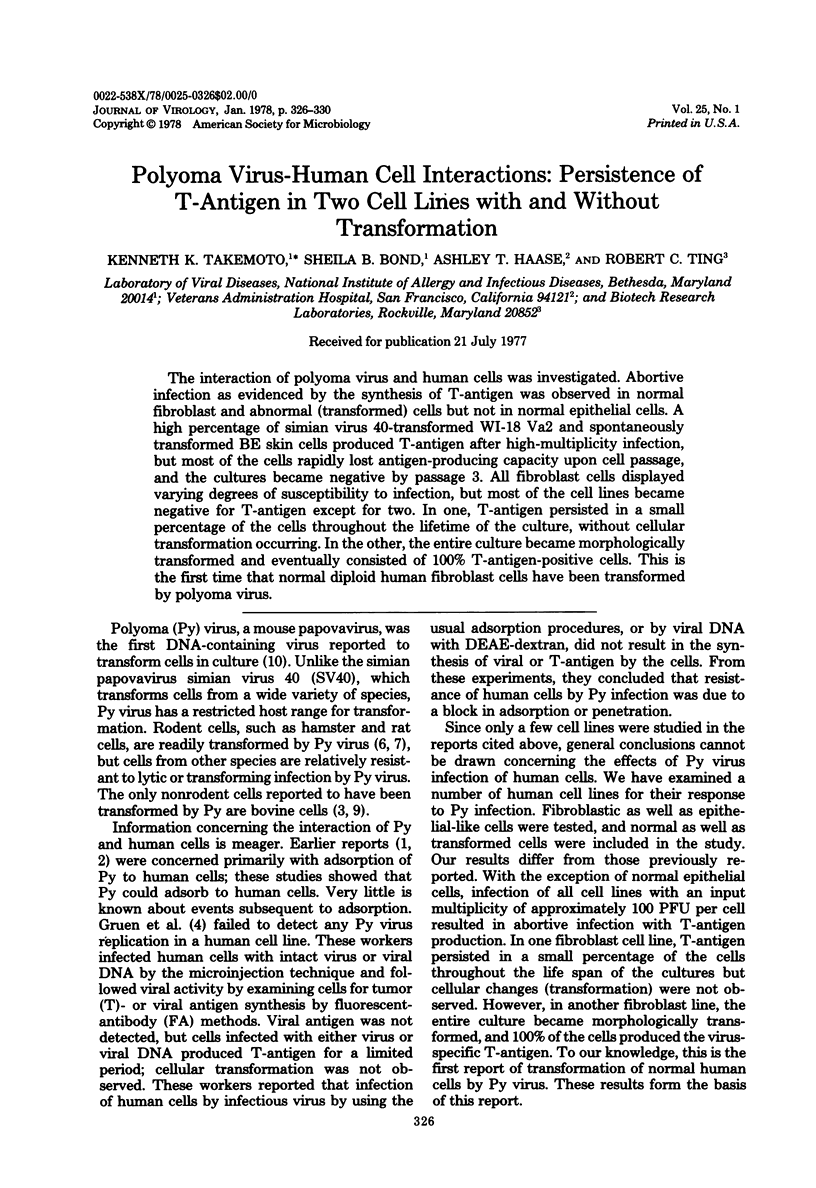
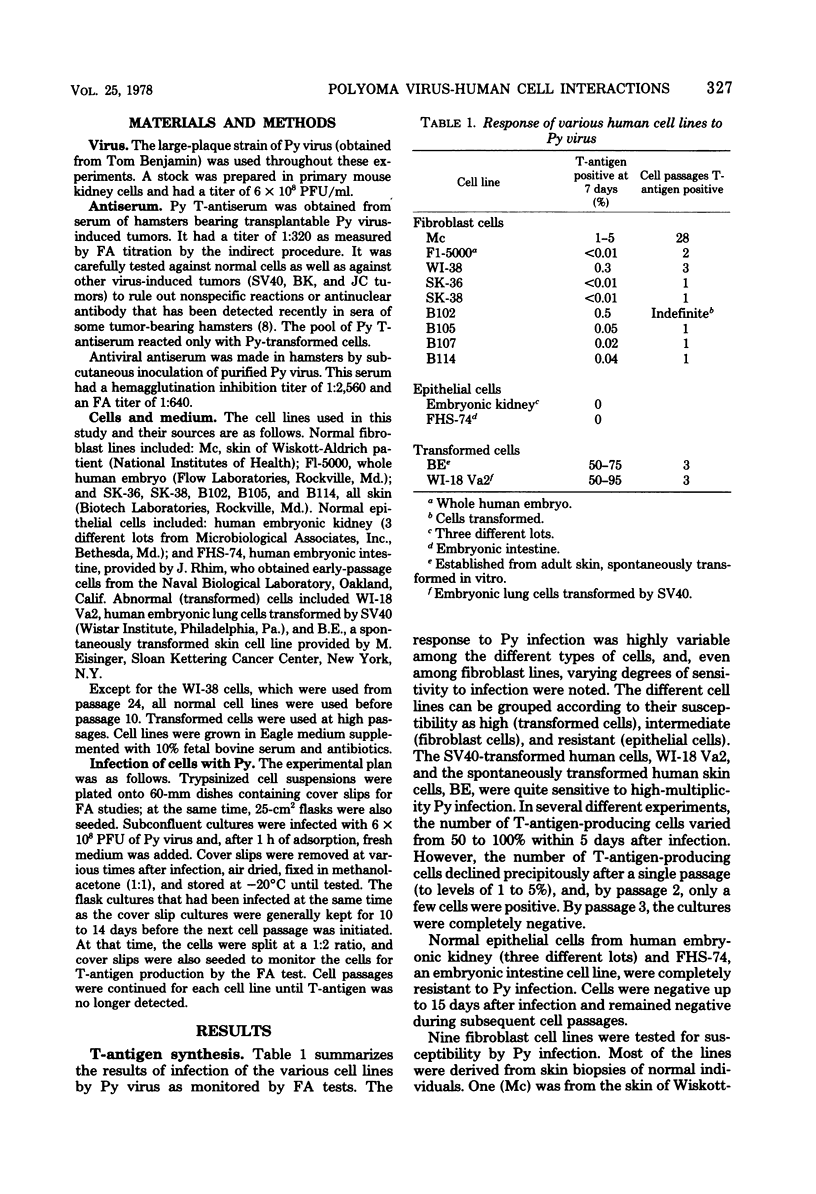
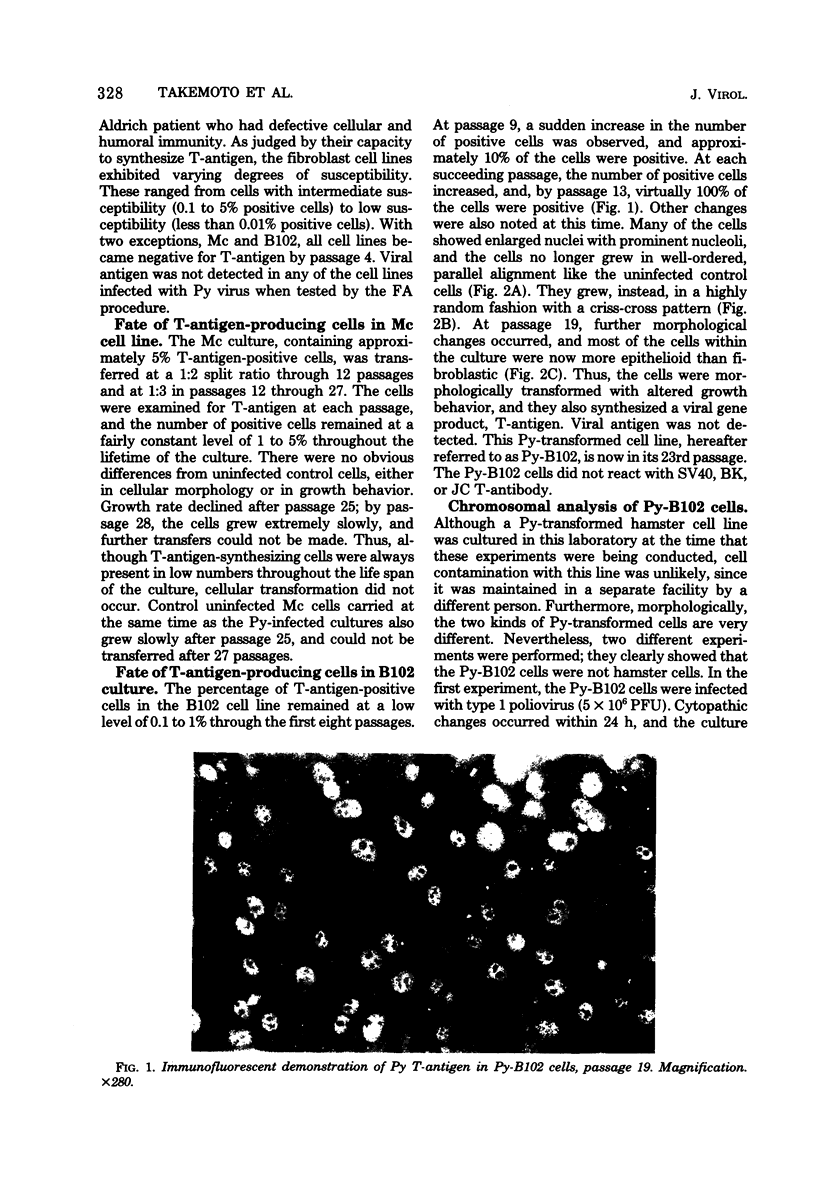
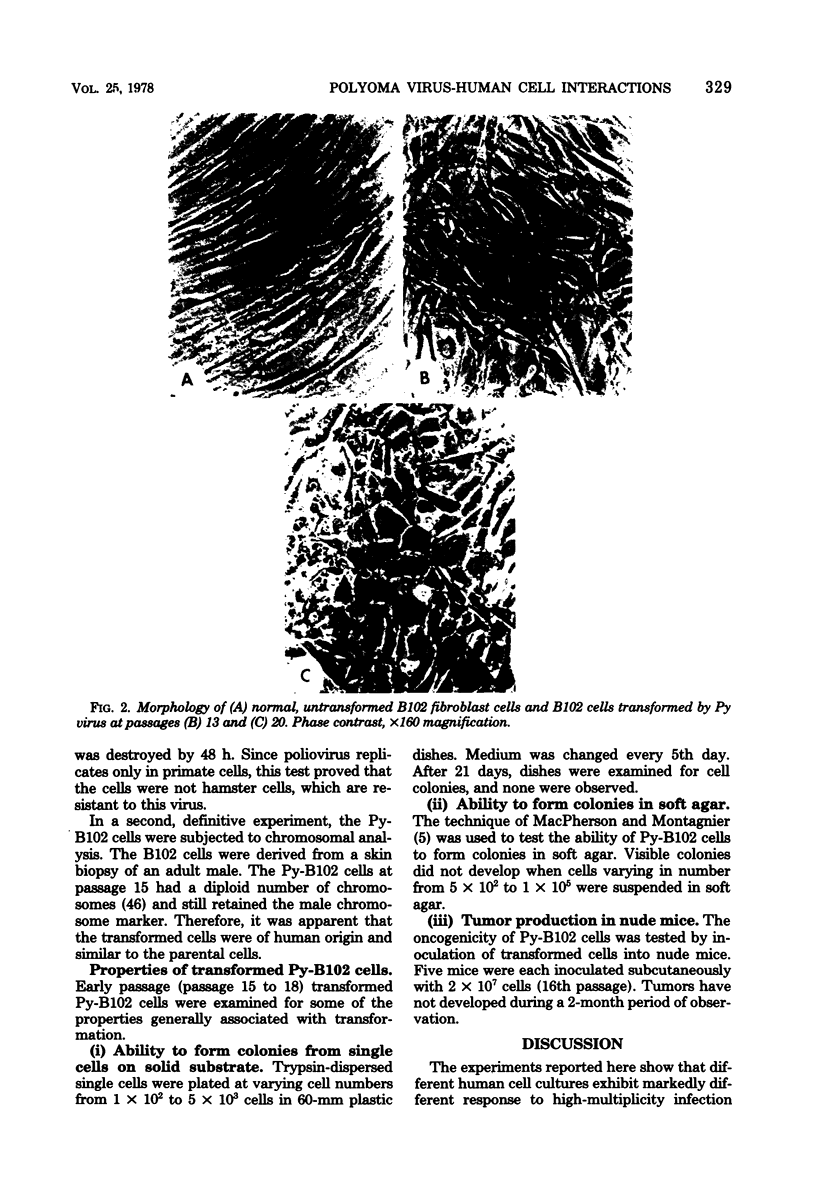
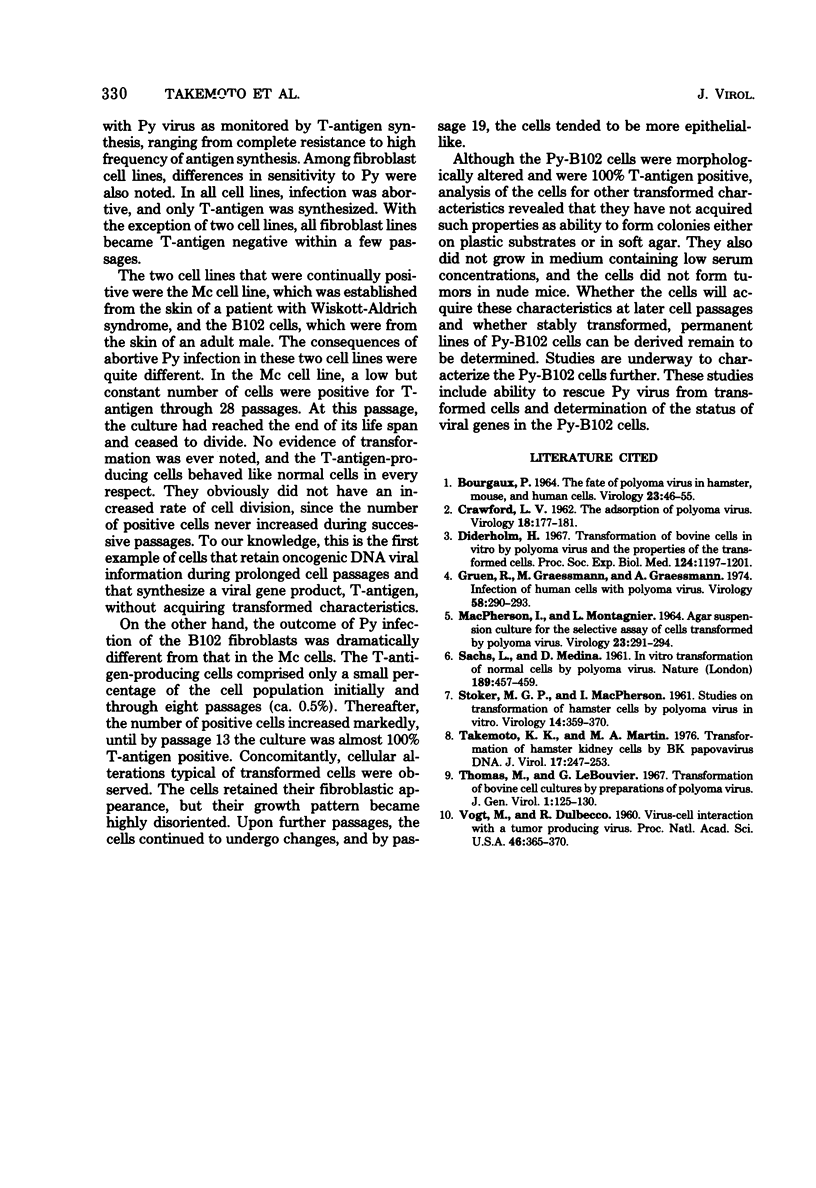
Images in this article
Selected References
These references are in PubMed. This may not be the complete list of references from this article.
- BOURGAUX P. THE FATE OF POLYOMA VIRUS IN HAMSTER, MOUSE, AND HUMAN CELLS. Virology. 1964 May;23:46–55. doi: 10.1016/s0042-6822(64)80006-4. [DOI] [PubMed] [Google Scholar]
- CRAWFORD L. V. The adsorption of polyoma virus. Virology. 1962 Oct;18:177–181. doi: 10.1016/0042-6822(62)90003-x. [DOI] [PubMed] [Google Scholar]
- Diderholm H. Transformation of bovine cells in vitro by polyoma virus, and the properties of the transformed cells. Proc Soc Exp Biol Med. 1967 Apr;124(4):1197–1201. doi: 10.3181/00379727-124-31963. [DOI] [PubMed] [Google Scholar]
- Gruen R., Graessmann M., Graessmann A., Fogel M. Infection of human cells with polyoma virus. Virology. 1974 Mar;58(1):290–293. doi: 10.1016/0042-6822(74)90162-7. [DOI] [PubMed] [Google Scholar]
- MACPHERSON I., MONTAGNIER L. AGAR SUSPENSION CULTURE FOR THE SELECTIVE ASSAY OF CELLS TRANSFORMED BY POLYOMA VIRUS. Virology. 1964 Jun;23:291–294. doi: 10.1016/0042-6822(64)90301-0. [DOI] [PubMed] [Google Scholar]
- SACHS L., MEDINA D. In vitro transformation of normal cells by polyoma virus. Nature. 1961 Feb 11;189:457–458. doi: 10.1038/189457a0. [DOI] [PubMed] [Google Scholar]
- Takemoto K. K., Martin M. A. Transformation of hamster kidney cells by BK papovavirus DNA. J Virol. 1975 Jan;17(1):247–253. doi: 10.1128/jvi.17.1.247-253.1976. [DOI] [PMC free article] [PubMed] [Google Scholar]
- Thomas M., Le Bouvier G. Transformation of bovine cell cultures by preparations of polyoma virus. J Gen Virol. 1967 Jan;1(1):125–130. doi: 10.1099/0022-1317-1-1-125. [DOI] [PubMed] [Google Scholar]
- Vogt M., Dulbecco R. VIRUS-CELL INTERACTION WITH A TUMOR-PRODUCING VIRUS. Proc Natl Acad Sci U S A. 1960 Mar;46(3):365–370. doi: 10.1073/pnas.46.3.365. [DOI] [PMC free article] [PubMed] [Google Scholar]




